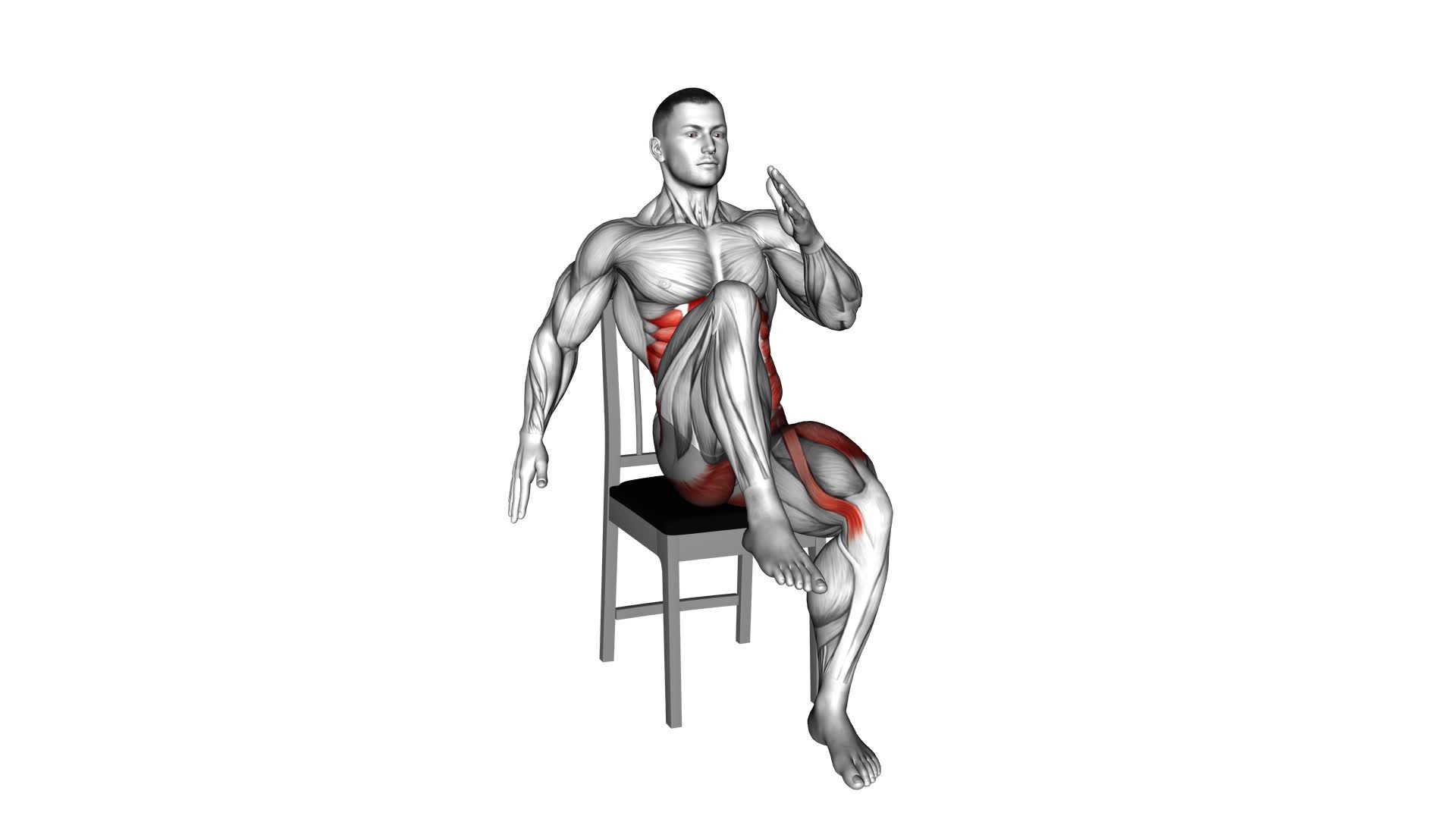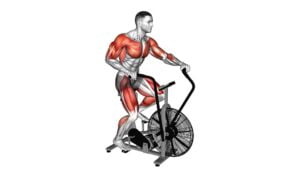Floating Run on Chair (male) – Video Exercise Guide & Tips

Are you looking for a challenging exercise that will target your lower body and core muscles? Look no further than the Floating Run on Chair.
Watch This Exercise Video
This video exercise guide and tips will show you the proper form and technique to perform this exercise effectively.
Whether you're a beginner or an advanced fitness enthusiast, there are modifications and variations to suit your fitness level.
Stay safe and prevent injuries with our expert tips.
Get ready to take your workout to the next level!
Key Takeaways
- Floating run on chair increases cardiovascular endurance and improves core strength.
- Beginners can modify the exercise by using chair support or performing toe taps.
- Advanced variations include adding ankle weights and performing the exercise on an unstable surface.
- Safety and injury prevention tips include warming up properly, using a stable chair, and gradually increasing intensity over time.
Benefits of Floating Run on Chair
There are five key benefits to incorporating the Floating Run on Chair exercise into your workout routine.
Firstly, this exercise is great for increasing cardiovascular endurance. By engaging in a high-intensity, continuous running motion while suspended in the air, you're able to elevate your heart rate and improve your overall cardiovascular fitness.
Secondly, the Floating Run on Chair is highly effective in improving core strength. As you stabilize yourself on the chair and maintain a steady running motion, your core muscles, including your abdominal muscles and lower back, are engaged and strengthened. This exercise can help develop a strong and stable core, which is vital for maintaining proper posture and preventing injuries.
Additionally, the Floating Run on Chair also helps to improve balance and coordination, as it requires you to maintain control and stability while performing the running motion.
Furthermore, this exercise provides a low-impact workout option, making it suitable for individuals with joint issues or those looking to minimize stress on their joints.
Lastly, incorporating the Floating Run on Chair into your workout routine can add variety and excitement to your exercise regimen, keeping you motivated and engaged.
Now that you understand the benefits, let's move on to discussing proper form and technique.
Proper Form and Technique
To perform the Floating Run on Chair exercise with proper form and technique, you should focus on maintaining a stable and controlled running motion while engaging your core muscles. This exercise is designed to strengthen your lower body, improve balance, and increase cardiovascular endurance.
One common mistake to avoid is leaning too far forward or backward while performing the exercise. This can throw off your balance and put unnecessary strain on your back. To maintain proper form, keep your torso upright and your shoulders relaxed.
Another mistake isn't engaging your core muscles. Your core plays a crucial role in stabilizing your body during the exercise. To engage your core, imagine pulling your belly button towards your spine, and maintain this contraction throughout the movement.
Breathing techniques are also important during the Floating Run on Chair exercise. It's recommended to exhale forcefully as you lift your knee and swing your arm forward, and inhale deeply as you extend your leg and bring your arm back. This rhythmic breathing pattern helps to oxygenate your muscles and maintain a steady pace.
Modifications for Beginners
Start with modified versions of the Floating Run on Chair exercise to make it more accessible for beginners. Here are three beginner modifications and progressions for beginners to try:
- Chair Support:
Begin by sitting on a stable chair with your feet flat on the ground. Hold onto the sides of the chair for support. Lift one foot off the ground and bring your knee up towards your chest, then lower it back down. Alternate between legs for a set amount of repetitions. This modification helps to build strength and stability in the core and lower body.
- Toe Taps:
Stand facing the chair with your feet hip-width apart. Place one foot on the seat of the chair while keeping the other foot on the ground. Lift the foot on the chair and tap your toes on the seat, then lower it back down. Alternate between legs for a set amount of repetitions. This modification focuses on balance and coordination.
- Slow Tempo:
Perform the Floating Run on Chair exercise at a slower tempo. This allows you to focus on maintaining proper form and engaging the correct muscles without sacrificing control. Gradually increase the speed as you become more comfortable and confident with the exercise.
Remember to listen to your body and only progress to more challenging modifications when you feel ready. With consistent practice, you'll gradually build strength and improve your fitness level.
Advanced Variations to Challenge Yourself
Take your Floating Run on Chair exercise to the next level with these advanced variations.
If you're looking to challenge yourself and push your limits, try incorporating some advanced modifications to increase the difficulty levels.
One option is to add ankle weights to intensify the workout and engage your leg muscles even more.
Another advanced variation is to perform the exercise on an unstable surface, such as a Bosu ball or a balance board. This will require more stability and coordination, forcing your muscles to work harder to maintain balance.
Additionally, you can try performing the exercise at a faster pace or increasing the number of repetitions to further challenge your cardiovascular endurance.
Remember to listen to your body and progress at a pace that's comfortable for you.
As you explore these advanced variations, make sure to keep safety and injury prevention in mind.
Tips for Safety and Injury Prevention
To ensure your safety and prevent injuries during the Floating Run on Chair exercise, it's important to follow these tips:
- Warm up properly: Before attempting any exercise, it's crucial to warm up your muscles and joints. Spend a few minutes doing dynamic stretches or light cardio exercises to increase blood flow and prepare your body for the workout. This will help reduce the risk of muscle strains or sprains during the Floating Run on Chair.
- Maintain proper form: One of the most common mistakes people make during this exercise is losing control and balance. To prevent injuries, make sure you have a stable and sturdy chair to perform the exercise on. Keep your core engaged, shoulders down, and focus on landing softly with each step. Avoid excessive bouncing or jerky movements that may strain your joints.
- Gradually increase intensity: If you're new to the Floating Run on Chair exercise, start with a lower intensity and gradually increase it over time. Pushing yourself too hard too soon can lead to overuse injuries or muscle fatigue. Listen to your body, and if you experience any pain or discomfort, take a break or modify the exercise to suit your fitness level.
Frequently Asked Questions
What Is the Recommended Duration for Performing the Floating Run on Chair Exercise?
The recommended duration for performing the floating run on chair exercise isn't specified without the context of the specific video guide.
However, the benefits of this exercise include:
- Improving cardiovascular endurance
- Strengthening leg muscles
- Increasing core stability.
It's important to consult a fitness professional or follow a structured workout program to determine the appropriate duration for this exercise based on your fitness level and goals.
Can the Floating Run on Chair Exercise Help With Weight Loss?
The floating run on chair exercise can definitely help with weight loss. It's a great way to burn calories and increase your heart rate, which are essential for shedding those extra pounds.
In addition to weight loss, this exercise also offers several benefits for overall fitness. It helps improve cardiovascular endurance, strengthens the lower body muscles, and enhances coordination and balance.
To modify the exercise for different fitness levels, you can adjust the speed and intensity of the run, or use support if needed.
Is It Necessary to Warm up Before Attempting the Floating Run on Chair Exercise?
Before attempting the floating run on chair exercise, it's essential to warm up your body. Dynamic warm-up exercises help increase blood flow, loosen up your muscles, and prepare you for the workout ahead.
Additionally, stretching before exercise is crucial for preventing injuries and improving flexibility. By incorporating a warm-up and stretching routine into your exercise regimen, you can maximize the benefits of the floating run on chair exercise and minimize the risk of strains or sprains.
How Often Should the Floating Run on Chair Exercise Be Included in a Workout Routine?
Including the floating run on chair exercise in your workout routine can bring numerous benefits.
This exercise engages your core, glutes, and leg muscles, promoting strength and stability.
As for frequency, it's recommended to perform this exercise 2-3 times per week for optimal results.
Remember, you can also try different variations of the floating run on chair exercise to challenge yourself and keep your workouts exciting.
Incorporating this exercise regularly can help you achieve your fitness goals effectively.
Are There Any Alternative Exercises That Can Provide Similar Benefits to the Floating Run on Chair Exercise?
If you're looking for alternative exercises that can provide similar benefits to the floating run on chair exercise, there are a few options to consider.
Variations like high knees, mountain climbers, or running in place can help improve cardiovascular endurance and leg strength.
These exercises can be done anywhere and require no equipment.
Incorporating these alternatives into your workout routine can help you achieve similar benefits to the floating run on chair exercise.
Conclusion
In conclusion, the floating run on chair exercise is a challenging and effective way to strengthen your core and improve balance. By maintaining proper form and technique, you can maximize the benefits of this exercise.
Beginners can modify the exercise to suit their fitness level, while advanced variations provide a greater challenge. Remember to prioritize safety and injury prevention by following the provided tips.
Incorporating the floating run on chair into your workout routine can help you achieve your fitness goals.

Author
Years ago, the spark of my life’s passion ignited in my mind the moment I stepped into the local gym for the first time. The inaugural bead of perspiration, the initial endeavor, the very first surge of endorphins, and a sense of pride that washed over me post-workout marked the beginning of my deep-seated interest in strength sports, fitness, and sports nutrition. This very curiosity blossomed rapidly into a profound fascination, propelling me to earn a Master’s degree in Physical Education from the Academy of Physical Education in Krakow, followed by a Sports Manager diploma from the Jagiellonian University. My journey of growth led me to gain more specialized qualifications, such as being a certified personal trainer with a focus on sports dietetics, a lifeguard, and an instructor for wellness and corrective gymnastics. Theoretical knowledge paired seamlessly with practical experience, reinforcing my belief that the transformation of individuals under my guidance was also a reflection of my personal growth. This belief holds true even today. Each day, I strive to push the boundaries and explore new realms. These realms gently elevate me to greater heights. The unique combination of passion for my field and the continuous quest for growth fuels my drive to break new ground.







